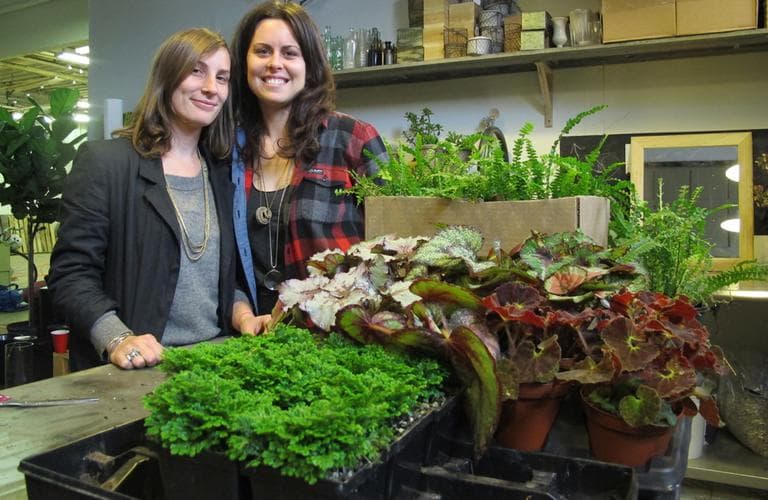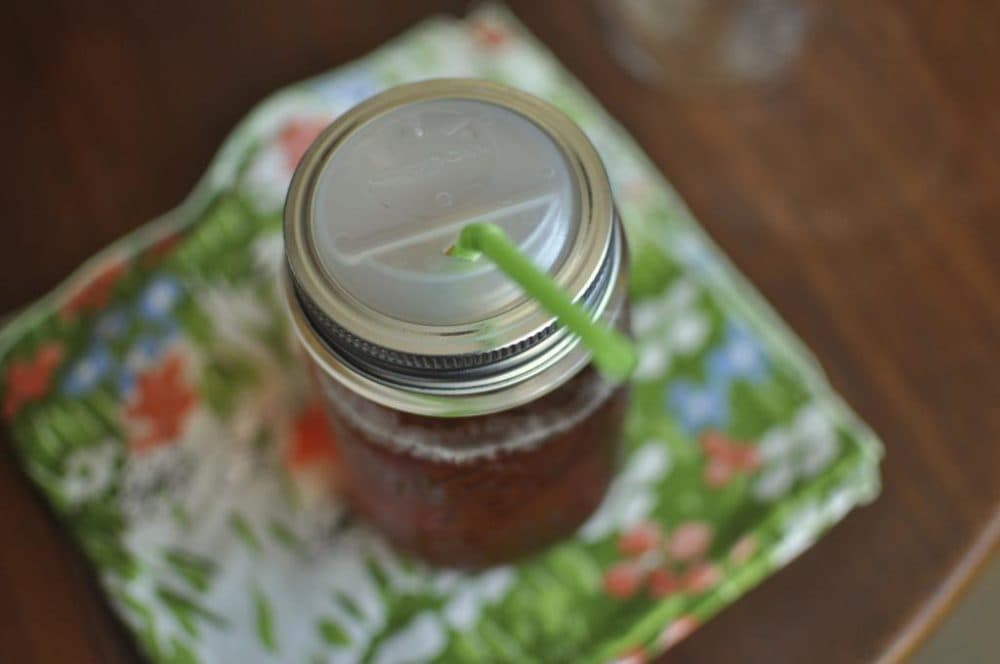Advertisement
Shared Creative Workspace Nurtures Success In Somerville
ResumeSince the recession hit we’ve heard about the rise of co-working office spaces and small business incubators, but a place called Fringe in Somerville has been nurturing a unique angle. It’s a creative collective where members share skills, knowledge, even clients — and it’s all by design.
Fringe occupies a 7,500-square-foot former soap factory that's tucked away on a quiet Union Square street. Fifteen small, creative businesses call the renovated but still raw space home. Walking through the industrial, open-concept building you pass stalls and alcoves where web designers, photographers and interior designers do their work.
Mike Hamilton is one half of Price Hamilton Design Build, a company he started with his sister, Christine. They moved to Fringe last spring.
“I was in a basement before,” Hamilton said with a laugh. "So this is a step up."
Engineer Andrew Muro echoed his Fringe-mate's sentiment when I asked where he'd be if he wasn't here. “I don’t know, I’d probably be working out of my bedroom — which is way less fun." And a lot lonelier, he admitted.
In the space next to Hamilton's, Erin Heath and Rose Mattos are making terrariums for their sustainable floral design company, Foret. Their arrangements look like something you’d see in a still life by a Dutch painter or a Victorian greenhouse.

Before striking out on their own, the duo designed window and store displays for the retail giant Anthropologie. Things are going well for the budding entrepreneurs, but 26-year-old Mattos and Heath, who’s 28, admit leaving their steady jobs was pretty scary. They worried about high rents and expenses like, “heat, the lighting, snow removal, trash removal, electric, internet,” Heath explained.
But shared utilities aren’t the only reasons they applied to join Fringe last year.
“Starting a business there are so many questions and so many things you’re trying to figure out and a lot of these folks have already done it,” Heath said. “And so it’s a great resource for us to be like, ‘Hey, do you know any good accountants? Do you have any lawyers or advice?"
Then Mattos chimed in one more big question, "How did you do your taxes?"
An Intentional Model
“Even though we're different industries we go through the same growing pains that other startups go through,” Mark Winter explained. He runs Recover Green Roofs and has been with Fringe for three years.
The 33-year-old acknowledges the tangible benefits that come with working in a group setting — but also the intangible ones.
"Starting a business there are so many questions ... and a lot of these folks have already done it, so it’s a great resource"
Erin Heath of Foret
“We all have our up days and we all have our down days, and luckily they’re not on the same day,” Winter said. “So when we have a down day I’ll see Mike and he’ll cheer me up and keep me going because every day there’s a new obstacle that you need to figure out how to get over.”
The "Mike" Winter referred to is Mike Dacey, the founder of Fringe. Dacey started the collective in July 2009 when a posse of small businesses and creative studios were hunting for space in the neighborhood. They pooled together enough money to pay the rent on this vast building and, Dacey mused, “It worked out pretty well.”
It sounds fortuitous, but the model Dacey has forged is definitely intentional.
“We are certainly not first come, first serve,” Dacey said. “We’re pretty picky about who we bring on as members.”
Creative Symbiosis
Fringe selects members based on their willingness to contribute to the larger whole — anything from advice to skills and moral support. And many of the creative services under this roof compliment each other, resulting in a sort of symbiosis.
Dacey runs Repeat Press, a contemporary printing company. As we toured his workspace the 31-year-old fired up an antique letter press machine he uses to make business cards, invitations and posters for rock bands. Dacey explained how the creative collective often ends up sharing clients.
“They might be starting a business of their own and they need photography and a video and printing and interior design. And so they get the tour — they walk down the hall and they meet five people who they might want to enlist their services at some point,” Dacey said.
These connections help boost each company’s bottom line, according to Dacey. But to be clear, the one-to-three person businesses operate independently. Dacey explained that rents start at $250 a month based on the amount of space occupied.
“Like a lot of spaces like this, everything is individual and everyone’s kind of working on their own,” engineer and designer Aaron Panone told me. “But you know everyone has different specialties and you put all those together and you can create something that people just really love.”
Poster Child For The State's 'Creative Economy'
The 29-year-old is talking about a project he and his Fringe-mates worked on together called Cuppow. It’s a plastic lid that turns mason jars into something like a sippy cup for adults.
"We try not to use the word sippy cup," Panone joked, obviously quite familiar with the reference. "We prefer travel mug."

Panone has been with Fringe since day one. He designed Cuppow with his business partner, then other Fringe members pitched in to work on the product’s graphics, packaging, website, video and photos. They fronted their services but got paid after Cuppow took off. Over 120,000 units have been sold in more than 600 stores throughout the U.S., Canada and Japan.
“It’s gone beyond our expectations,” Panone admitted.
“I think [Cuppow] shows that we’re just scratching the surface in these sort of creative economy, think-tank type of collaborations,” Helen Fruscio explained. As the state’s creative economy industry director, Fruscio works to cultivate the creative workforce in Massachusetts, which includes some 100,000 people doing all kinds of work — from marketing and design to video games, publishing and music.
According to Fruscio, the creative workforce in Massachusetts drives a $1 billion industry, but she said starting a creative business on your own can be daunting and impossible for many. She points to the explosion of collaborative workspaces in places like Brooklyn, Boston and Somerville, and holds Fringe up as a model.
“I think that there is a lot of potential when you get creative economy brains, the people who are working in these fields, together to start thinking innovatively — and then really bringing things to market,” Fruscio said.
Fruscio even uses the Cuppow in presentations she shows to entrepreneurs across the state. Not bad for a bunch of creative types who used to work in their basements.
This program aired on January 28, 2013.
